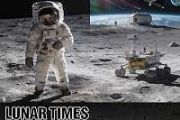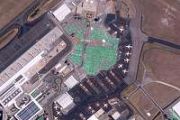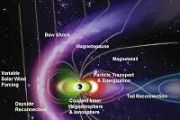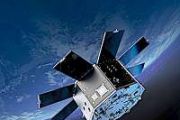
Copernical Team
Carbon dioxide monitoring mission in development
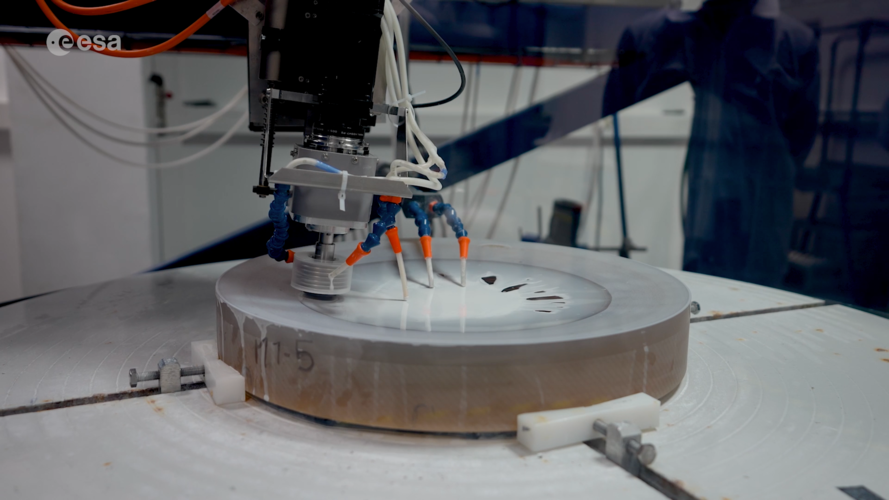 Video:
00:04:58
Video:
00:04:58
The pressure is on to reduce the amount of greenhouse gases we pump into the atmosphere – but the race is also on to support the monitoring that shows if targets are being met. Being developed by ESA on behalf of the EU, the new Copernicus Anthropogenic Carbon Dioxide Monitoring mission, or CO2M for short, is destined to be Europe’s prime mission for monitoring and tracking carbon dioxide emissions from human activity. CO2M is currently planned as a two-satellite mission, each of which will carry a near-infrared and shortwave-infrared spectrometer to measure atmospheric carbon dioxide at high
ExoMars rover testing moves ahead and deep down

The first of a new generation of lunar 'astronauts' return to Cologne
 Following their historical journey around the Moon as part of NASA's Artemis I mission, the radiation-measuring mannequins, Helga and Zohar, are back in Cologne. On 9 March 2023, the two female astronaut phantoms were presented to the media by the German Aerospace Center at its Institute of Aerospace Medicine for the first time since their flight. Once evaluated, the data from the Matroshka Astr
Following their historical journey around the Moon as part of NASA's Artemis I mission, the radiation-measuring mannequins, Helga and Zohar, are back in Cologne. On 9 March 2023, the two female astronaut phantoms were presented to the media by the German Aerospace Center at its Institute of Aerospace Medicine for the first time since their flight. Once evaluated, the data from the Matroshka Astr EMURGO Africa and Kepple Africa establish JV to further Web3 partnership
 EMURGO Africa and Kepple Africa Ventures has announced the establishment of a business joint venture EMURGO Kepple Ventures to further accelerate its strategic partnership investing in African Web3 businesses. EMURGO Africa and Kepple signed an MoU in September 2022 to jointly spearhead Web3 investment opportunities including token investments in Africa. Despite recent challenges such as the cry
EMURGO Africa and Kepple Africa Ventures has announced the establishment of a business joint venture EMURGO Kepple Ventures to further accelerate its strategic partnership investing in African Web3 businesses. EMURGO Africa and Kepple signed an MoU in September 2022 to jointly spearhead Web3 investment opportunities including token investments in Africa. Despite recent challenges such as the cry Sure South Atlantic picks Intelsat to connect three British Island Territories
 Intelsat, operator of one of the world's largest integrated satellite and terrestrial networks, and Sure South Atlantic, an international telecommunications service provider, have signed an expanded agreement to enable Sure to improve the capability and reliability of communications for residents of the Falkland Islands, Saint Helena and Ascension Island in the South Atlantic Ocean.
As the
Intelsat, operator of one of the world's largest integrated satellite and terrestrial networks, and Sure South Atlantic, an international telecommunications service provider, have signed an expanded agreement to enable Sure to improve the capability and reliability of communications for residents of the Falkland Islands, Saint Helena and Ascension Island in the South Atlantic Ocean.
As the Space-bound heart tissue to aid aging and long-flight studies
 Johns Hopkins Medicine researchers are collaborating with NASA to send human heart "tissue-on-a-chip" specimens into space as early as March. The project is designed to monitor the tissue for changes in heart muscle cells' mitochondria (their power supply) and ability to contract in low-gravity conditions.
The tissue samples will be launched into space aboard SpaceX CRS-27, a resupply miss
Johns Hopkins Medicine researchers are collaborating with NASA to send human heart "tissue-on-a-chip" specimens into space as early as March. The project is designed to monitor the tissue for changes in heart muscle cells' mitochondria (their power supply) and ability to contract in low-gravity conditions.
The tissue samples will be launched into space aboard SpaceX CRS-27, a resupply miss Hughes and Stargroup extend mobile networks in Mexico
 Hughes Network Systems reports that Stargroup, a Mexican telecommunications, has selected the Hughes JUPITER System and managed satellite broadband to extend LTE service to customers in rural communities. As part of the Mexican government's Comision Federal de Electricidad (CFE) Telecomunicaciones e Internet para Todos initiative to help bridge the digital divide, Stargroup is connecting hundred
Hughes Network Systems reports that Stargroup, a Mexican telecommunications, has selected the Hughes JUPITER System and managed satellite broadband to extend LTE service to customers in rural communities. As part of the Mexican government's Comision Federal de Electricidad (CFE) Telecomunicaciones e Internet para Todos initiative to help bridge the digital divide, Stargroup is connecting hundred OneWeb confirms successful deployment of 40 satellites launched with SpaceX
 OneWeb, the low Earth orbit (LEO) satellite communications company,has confirmed the successful deployment and contact of 40 satellites launched by SpaceX from Cape Canaveral Space Force Station in Florida.
Lift-off took place on Thursday, March 9, 2023, at 2:13pm ET (local). OneWeb's satellites separated successfully from the rocket and were dispensed using three separation groups over a
OneWeb, the low Earth orbit (LEO) satellite communications company,has confirmed the successful deployment and contact of 40 satellites launched by SpaceX from Cape Canaveral Space Force Station in Florida.
Lift-off took place on Thursday, March 9, 2023, at 2:13pm ET (local). OneWeb's satellites separated successfully from the rocket and were dispensed using three separation groups over a Chandra helps astronomers discover a surprisingly lonely galaxy
 This image features a galaxy called 3C 297 that is lonelier than expected after it likely pulled in and absorbed its former companion galaxies, as described in our latest press release. The solo galaxy is located about 9.2 billion light-years from Earth and contains a quasar, a supermassive black hole pulling in gas at the center of the galaxy and driving powerful jets of matter seen in radio wa
This image features a galaxy called 3C 297 that is lonelier than expected after it likely pulled in and absorbed its former companion galaxies, as described in our latest press release. The solo galaxy is located about 9.2 billion light-years from Earth and contains a quasar, a supermassive black hole pulling in gas at the center of the galaxy and driving powerful jets of matter seen in radio wa NASA releases detailed map of upcoming eclipses
 NASA has released a detailed map of where solar eclipses will be visible in 2023 and 2024.
Data from multiple past NASA missions was used to create the map and calculate the position of the moon's shadow during upcoming annular and total eclipses that will be visible in parts of the United States in October 2023 and April 2024.
Orange ovals on the map represent locations where an
NASA has released a detailed map of where solar eclipses will be visible in 2023 and 2024.
Data from multiple past NASA missions was used to create the map and calculate the position of the moon's shadow during upcoming annular and total eclipses that will be visible in parts of the United States in October 2023 and April 2024.
Orange ovals on the map represent locations where an 
